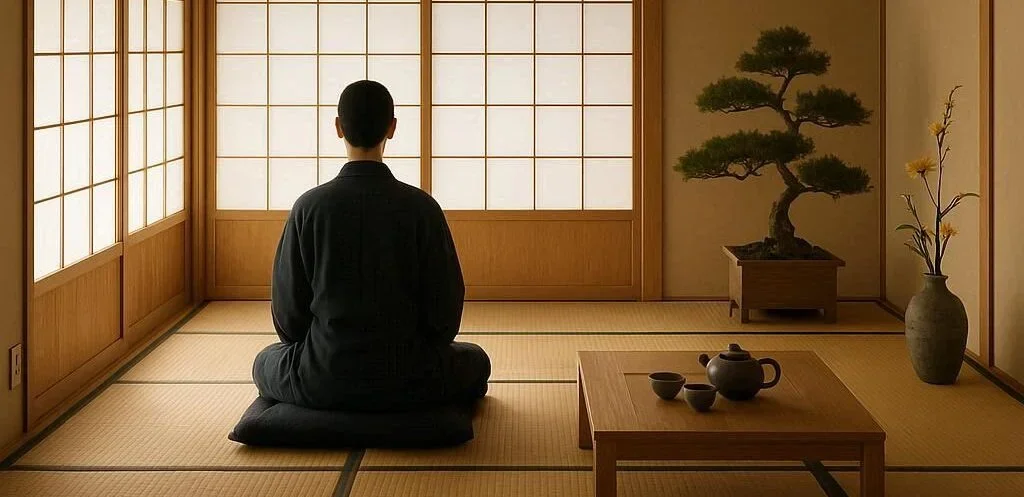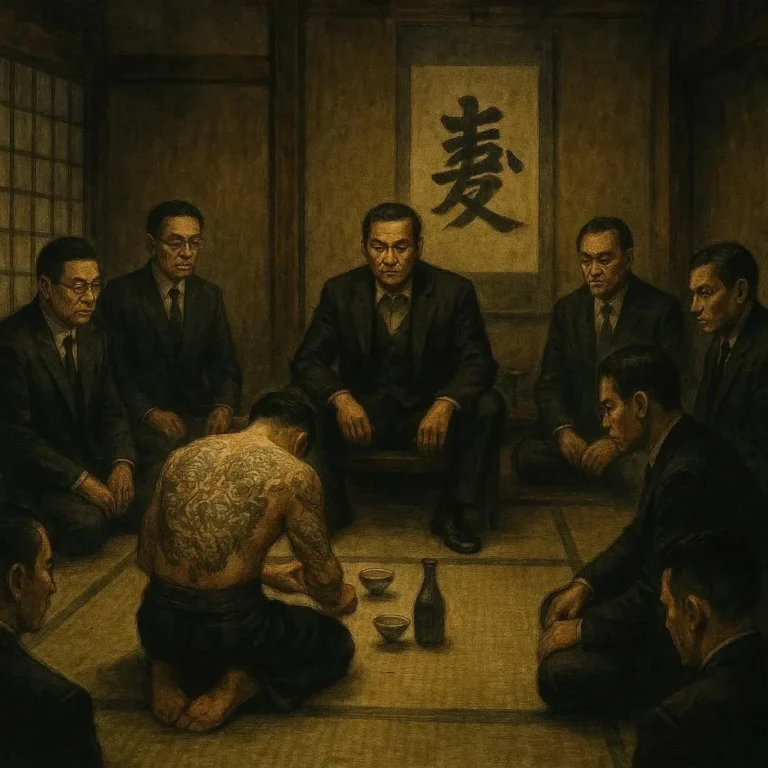515 views The Spiritual Connection Between Zen and Samurai Discipline
Zen and the samurai have long intrigued scholars, martial artists, and modern seekers who yearn for a balanced life rooted in discipline, presence, and calm. While they hail from distinct realms – one a contemplative Buddhist practice, the other a warrior code – both converge on a shared spiritual architecture that shapes body, mind, and spirit.
In this in‑depth exploration, we trace the philosophical highways that link Zen koans to bushido ethos, uncover how daily rituals cultivate shared virtues, and reveal practical ways you can integrate these timeless principles into contemporary life.
1. Historical Overlap: How Zen Met the Samurai
1.1 Zen’s Arrival in Japan
Zen, an offshoot of Indian Mahāyāna Buddhism, arrived in Japan in the 12th century via Chinese intermediaries. The Ōbaku and Rinzai schools took root in Kyoto and Tokyo, and by the late Muromachi period (1336‑1573), a growing number of samurai were invited into monasteries, learning to channel martial focus through meditation.
1.2 The Birth of Bushido
Bushido, literally the way of the warrior, codified values such as loyalty, courage, and honor. While written later in the Edo period (1603‑1868), the spirit of bushido had been simmering for centuries. Samurai were expected to master sword techniques and the mental mentalities that could sustain them in the battlefield.
1.3 A Cross‑Pollination of Ideals
- Mindfulness in Combat – Zen’s shikantaza (“just sitting”) training sharpened focus, much like a samurai’s attention to the tilt of a blade.
- The Monastic “Dojo” – Many dojo still conduct zazen as a pre‑training ritual.
- Ephemeral Mindset – Both Zen and samurai mystify through mukashi zikir (unending memory) and the notion of being present in the now.
2. Core Spiritual Tenets Shared by Zen and Samurai
To truly appreciate how Zen and samurai discipline intertwine, it’s essential to understand the pillars that both honour.
2.1 Mind‑Body Harmony
Samurai cultivated tight discipline in the kata—pre‑arranged forms of combat. But the kata is also a physical meditation: a repetitive, mindful sequence that trains stillness and flow. Zen philosophy posits that thoughts are waves; observing them without attachment is akin to a samurai watching the wind shift through the bamboo forest.
Practitioner Tip:
- Combine walking meditation with kata positioning to create a fluid, mindful workout.
2.2 The Power of Presence
Zen professor Dōgen wrote, “Work by the time your pattern of thinking stops.” Meanwhile, the samurai’s tatenin (terminology for “at the edge”) demanded full presence in every stance. In practice, that means no mental chatter—only the body’s sensations.
Practical Exercise:
- Practice tai chi–like slow movements while rehearsing a sword guard. Notice how each movement synchronises with breath.
2.3 Commitment to a Master Path
Unlike many modern self‑improvement programs that offer quick fixes, Zen and samurai each obligate a lifelong journey. Bullying the technical aspects is insufficient; the moral framework – humility, integrity, and respect – must be cultivated.
Zen Quote: “The way is not a thing; the path is what we walk.”
Bushido Slogan: “I shall rot with my life’s loyalty.”
2.4 Alleviating Ego
Ego brings warping in both battlefield strategy and everyday life. Zen confronts ego through satori (spontaneous enlightenment), synchronizing the sensations of descent and ascendancy. Samurai, especially ronin, approached ego as a potential shogun that can lead them astray.
Mini‑Meditation:
- Sit for five minutes, register each intrusive thought as a cloud and let it drift—essentially observing your ego without judgement.
3. Rituals that Fuse Zen Meditation and Samurai Discipline
3.1 The Daily Kouh Ritual (Morning Greeting)
The Japanese term kouh refers to the morning ritual performed in dojo or temple. “We see that our eyes are symbolic of faith in the universe, and our hand gives us discipline.”
- Breath Alignment – 4‑3‑2‑1 countdown to sync breathing.
- Standing Posture – Feet slightly apart, hands in seiza position – a stand for accountability.
- Mantra Repetition – “One Heart, One Path.” When you finish, close with “For the sake of my allies, I will practice this day.”
3.2 Night Reflection Journaling
Journal method widely used by monks in monasteries. The process involves:
- Write five positive actions.
- Record three moments of ego obstruction.
- Conclude with a statement of commitment for tomorrow.
Using this technique bridges zazen introspection and the samurai ethical self‑audit.
4. Modern Adaptations: Turning Ancient Disciplines Into Daily Practice
Contemporary life offers new frontiers for integrating Zen and samurai ideals: start‑up culture, high demands, and constant digital overstimulation. Below are actionable steps to keep the most relevant lessons alive.
- Desk Zen – Sit with a warrior pose at your desk. Switch your posture every 25 minutes.
- Standup Meeting Mindfulness – Use the Samurais’ coincident breathing technique: inhale for three counts, pause for two, exhale for five counts.
- Octagonal Focus Training – Using a smartphone or a wooden block, pace 8‑step shogi routes, unfolding strategic decisions.
4.1 Integration Into the Workplace
- Team Routines – Start meetings with a silent “Five‑Second Zen” breathing, increasing focus.
- Lunch Break Kata – Use 5‑minute kata routines for quick re‑energisation.
4.2 Personal Growth Apps
While technology and AI may seem to erode subtlety, the Samurai code can thrive even with apps that teach meditation or breathing patterns. Pair an audio koan with your daily sprint review to remind you of the emotional landscape that isn’t always visible.
5. The Enduring Philosophy: Zen as the Heart of Samurai Boldness
At the heart of both Zen and samurai discipline lies a profound truth: the voyage of self‑mastery is not about destroying the self but illuminating it. While a samurai may seek mastery over the kiai (shouting) to channel power, a Zen practitioner learns to embrace the kiai of thoughts without absorbing.
5.1 Where the Path Crosses
When a samurai meditates on the koan “What is the sound of one hand clapping?” they experience the same self‑observational state as those practising rōshi “Overcome your ego, and you will find clarity.”
5.2 Lifelong Sutra
In essence, the sutra is not a manual for worldly success but a lighthouse for navigating through the storms of ambition, ambition, and ego.
6. Takeaways and Daily Commitment
- Start small: five minutes of breathing each morning can set a tone of awareness.
- Repeat: Repetition of a simple kata into routine fosters muscle memory that aligns with mental patterns.
- Reflect: After every task, ask yourself: Did I act with courage, loyalty, and humility?
- Cultivate Ego‑less presence: Recite a short mantra during stressful meetings: “I am a whole body, not an ego.”
Final Thought
Whether on a battlefield, a corporate boardroom, or a solitary desk, the deep-rooted synergy between Zen meditation and the disciplined mind of a samurai offers an indispensable compass. Ground yourself in stillness, sharpen your focus, and walk the path with unwavering intent. In doing so, you honour both a cultural legacy and your own spiritual destiny.






